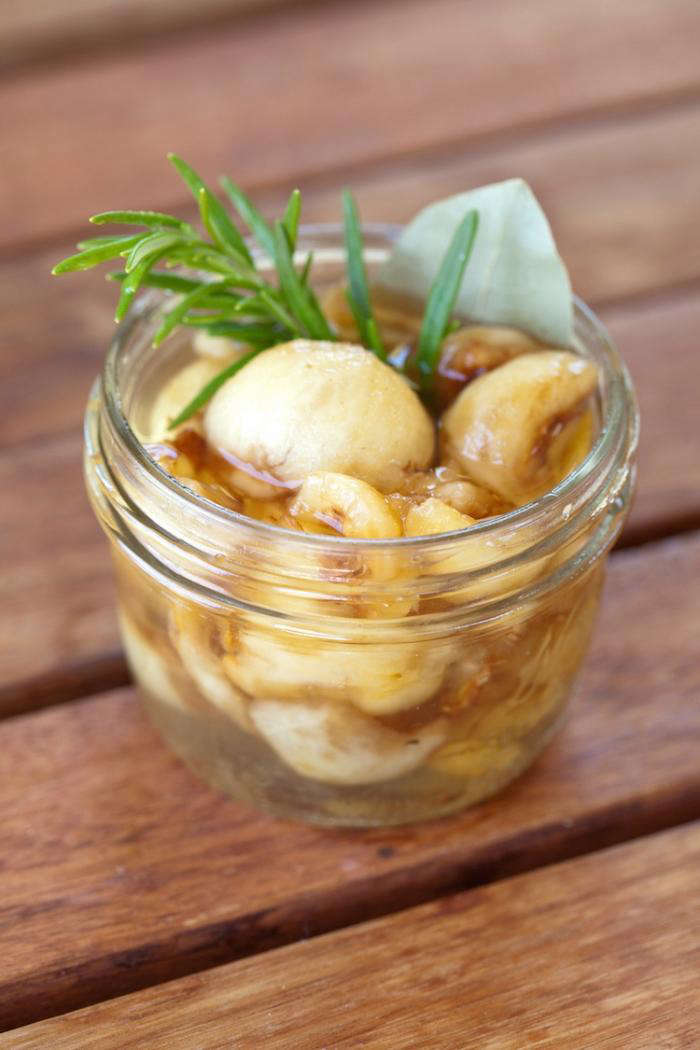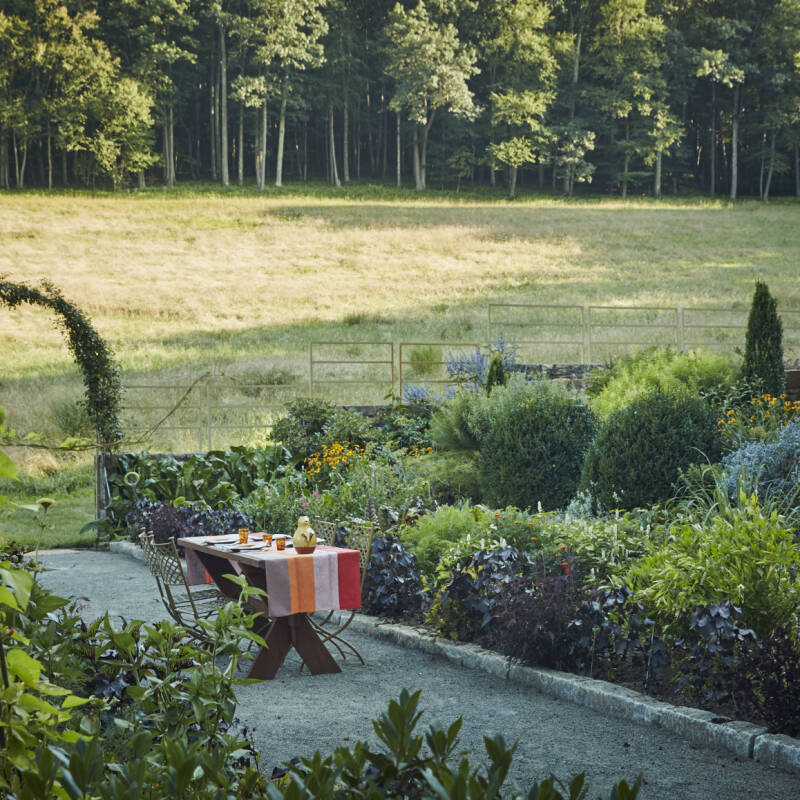I first heard about loquats from a friend who was studying acupuncture. In Chinese medicine, it’s believed that the fruit and leaves are good for sore throats, respiratory problems, and digestion. She found these handy fruits growing right outside her window.
Then, one night at a pop-up dinner party in the Mission district in San Francisco, I tasted a main dish of pork guanciale made with a deliciously tangy, foraged loquat sauce. And then… I realized what gems these often-neglected fruits are when I attended a liqueur-making class at 18 Reasons. My favorite of the evening was a rich, amaretto-like liqueur made from loquat seeds. Here’s the recipe:
Photographs by Marla Aufmuth for Gardenista.

Above: Loquat trees are originally from China and came over here as ornamentals, valued for their deep green, leathery leaves.

Above: You usually smell fragrant bunches of loquats before you see them. Forage from private property only if you have permission. If not, stay on the sidewalks or public spaces.

Above: Because they grow in clusters, it’s easy to harvest loquats quickly.

Above: Getting them rinsed, de-seeded and peeled. The fruit we planned to pickle, but you also can make jams, salsas, chutneys, smoothies, and sauces.

Above: To pickle loquats, follow this recipe by The Hip Girl’s Guide to Homemaking.

Above: For liqueur, rinse seeds and set out in the sun to dry for two weeks.

Above: The classic Italian recipe calls for grain alcohol, but a neutral vodka works as well. To the pits, add one whole vanilla bean and 1/4 of a lemon rind, pith removed. Let this sit in the sun for about a month. Add a sugar simple syrup to taste, and then let it sit for another two weeks. In traditional Chinese medicine, it’s believed that the seeds of loquats suppress cancer. So toast to your health.
(N.B.: Want to have lemons on hand at all times? To find out how to grow your own indoor lemon tree, see “DIY: Potted Indoor Citrus Trees.”)








Have a Question or Comment About This Post?
Join the conversation